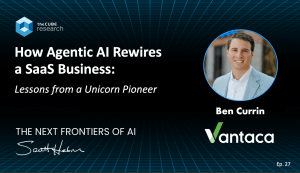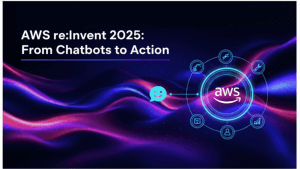As organizations navigate the evolving technology landscape, application development, cyber resiliency, and data protection are converging as critical focus areas for 2025. The theme of these interconnected domains revolves around the growing importance of integrating security measures from the onset of application development to ensure protection against cyber threats. Organizations are increasingly prioritizing resilience in their cybersecurity strategies to mitigate risks associated with data breaches and ransomware attacks.
Key Predictions and Trends
- AI-Augmented Development and Automation: AI-powered tools will increasingly assist developers by automating repetitive tasks such as code generation, debugging, and testing. However, attempts to scale AI-driven development initiatives will face challenges, as evidenced by at least one organization failing in its effort to replace 50% of developers with AI systems. While these tools improve productivity, they must catch up in handling complex problem-solving, innovation, and collaboration; areas where human expertise remains essential. Simultaneously, automation will extend beyond coding to non-coding activities, addressing productivity bottlenecks as developers report spending only 24% of their time on actual coding. Organizations leveraging these tools strategically will enable developers to focus on delivering innovation and value.
- Unified Platforms for DevOps and Security Integration: By the end of 2025, 50% of enterprises are expected to consolidate their DevOps toolchains into unified platforms. This shift will simplify operations, reduce overhead, and streamline workflows, enabling faster delivery cycles. Alongside this trend, DevSecOps will become a non-negotiable aspect of development workflows. Over 60% of organizations will adopt automated vulnerability scanning, continuous compliance monitoring, and embedding security into CI/CD pipelines. Addressing security as an integral part of development processes will mitigate risks from supply chain attacks and zero-day vulnerabilities while ensuring operational resilience.
- Low-Code and No-Code Expansion: The adoption of low-code and no-code platforms will grow by over 30%, enabling citizen developers to handle routine tasks and democratizing application development. This shift will redefine the roles of professional developers, who will focus more on governance, complex integrations, and advanced customizations. Balancing these platforms with strategic oversight will unlock greater efficiency while maintaining quality and compliance.
- Cyber Resiliency through Zero Trust and AI-Driven Security: Cyber resiliency strategies will increasingly center on Zero Trust Architecture (ZTA), emphasizing the principles of “never trust, always verify.” This approach will secure hybrid environments across identity, device, and network layers. AI and machine learning will enhance threat detection, enabling real-time identification of anomalies and faster incident response. Combined with resilience planning, including disaster recovery simulations, continuous backups, and failover mechanisms, these measures will minimize downtime and data loss in the face of growing cyber threats.
- Data Protection through Privacy and Advanced Encryption: Regulatory pressures and consumer expectations will push organizations to adopt privacy-by-design principles, embedding data protection into the core of applications and services. The rise of edge computing will necessitate strict data sovereignty measures to address security risks in decentralized environments. Encryption technologies will expand to cover data at rest, in transit, and use, with homomorphic encryption gaining traction for secure computation without exposing sensitive data.
Statistics and Insights on Cyber Resiliency and Data Protection Across Application Development
As organizations face the complexities of an evolving landscape, application development, cyber resiliency, and data protection have become pivotal focus areas for 2025. These interconnected domains highlight the critical importance of integrating security measures early in the software development lifecycle to counter evolving cyber threats.
With the rise of AI-augmented development, unified DevOps and security platforms, and the proliferation of low-code tools, businesses are reimagining workflows to foster innovation and efficiency. Similarly, a heightened emphasis on Zero Trust architectures, advanced encryption, and privacy-by-design principles reflects the urgency to protect data and ensure operational resilience against persistent cyber risks. By adopting holistic strategies that bridge these domains, organizations can navigate the challenges of 2025 with agility and confidence.
- Lack of Confidence in Data Protection Measures
A recent survey found that two-thirds of organizations are concerned about the sufficiency of their existing data protection measures to handle malware and cyber threats. Additionally, two-thirds believe remote work has increased their exposure to cyberattacks. Relevant to the skill gap in the workforce for application developers. - Cyberattack Incidence
In a recent survey, 48% of organizations reported experiencing a cyberattack in the last 12 months that prevented access to their data. This highlights the critical need for backup and recovery solutions. Protecting the application through the SLDC matters. - Operational Complexity as a Challenge
A recent study revealed that 65% of IT organizations consider increased operational management time and complexity to be among the top cybersecurity challenges impacting the SDLC. - Ransomware Persistence
On average, ransomware remains undetected in an environment for about 300 days, underscoring the need for vigilant monitoring and swift response strategies. - Resilience as a Priority
Due to inevitable security threats, enterprises are placing increasing emphasis on resilience. Companies are now prioritizing comprehensive portfolios that include capabilities like isolation and AI-powered recovery. - Recovery Focus in Cybersecurity Strategy
Recovery has become a central topic in cybersecurity discussions, with Dell emphasizing the importance of recovering mission-critical applications after an attack. - Integration from the App Development Stage
Security must be integrated throughout the application lifecycle rather than being an afterthought, ensuring resilience from coding to deployment stages.
In 2025, organizations will prioritize the convergence of application development, cyber resiliency, and data protection to address challenges. Key trends include AI-driven development, unified DevOps and security platforms, low-code adoption, and the implementation of Zero Trust architectures. These strategies aim to enhance productivity, integrate security early in development, and safeguard data against escalating cyber threats, enabling resilience and innovation in an increasingly complex technological landscape.
Strategic Implications
The convergence of application development, cyber resiliency, and data protection highlights the need for a holistic approach to technology strategy. These statistics underscore the pressing need for organizations to enhance their cybersecurity frameworks by embedding resilience into every aspect of their operations from app development through data protection in order to effectively combat evolving threats.
Organizations that prioritize unified platforms, balanced AI integration, and proactive security measures will gain a competitive edge. Businesses can achieve resilience, innovation, and sustainable growth in an increasingly complex environment by empowering developers, enhancing security, and safeguarding data.
Read more from the AppDev predictions series here.



